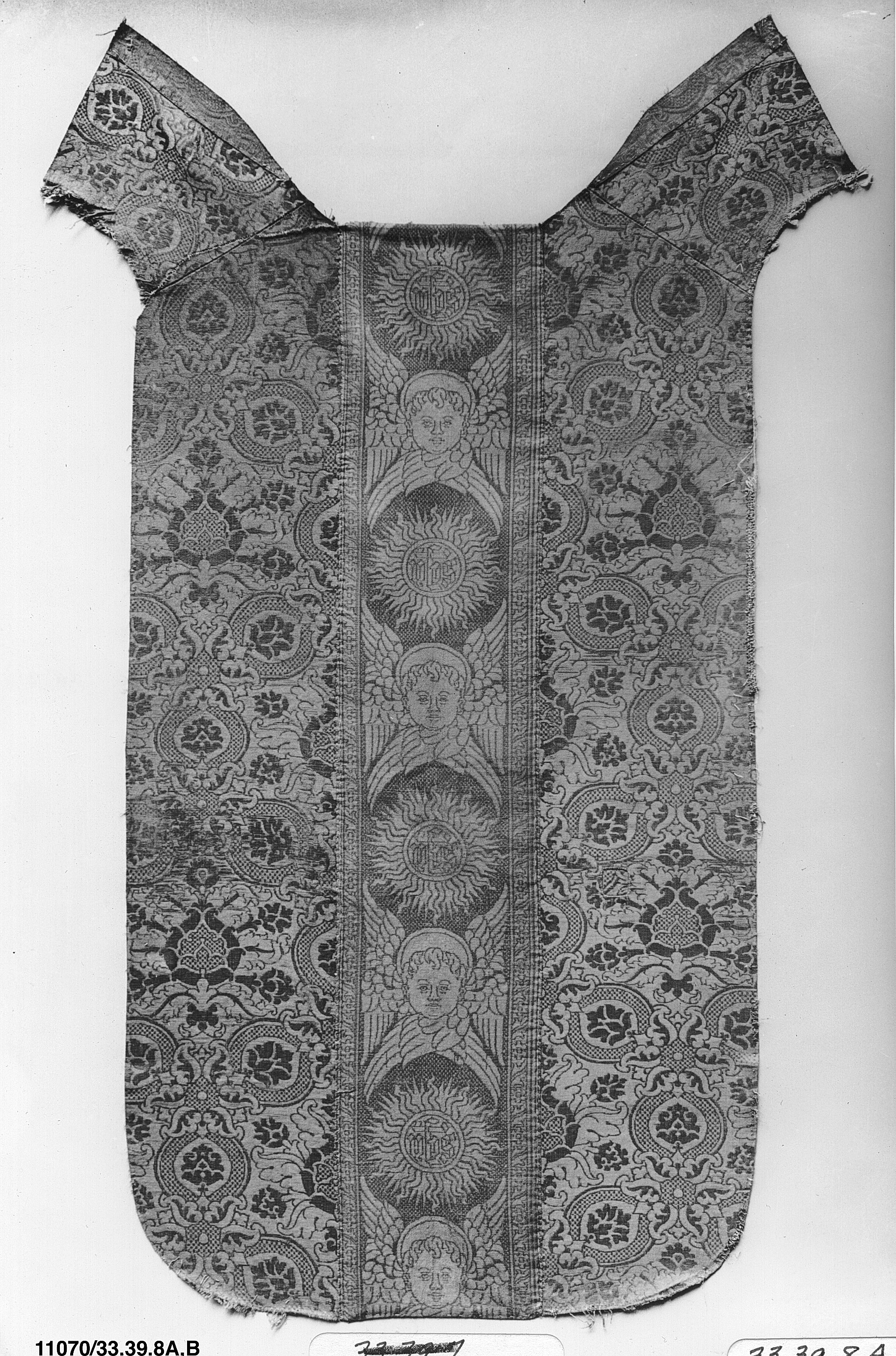Orphrey woven with figurative repeat design of seraphim with IHS Christogram in glories
Not on view
Although this object resembles the reverse of a chasuble– the tabard-like garment worn by a Catholic priest during church services– this is a modern composite of a central, figurative, woven orphrey strip (33.39.7) with two lengths of lampas silk (33.39.8a, .8b), assembled soon after the three elements entered The Met's collection in 1933.
Although, at first glance, this orphrey (33.39.7) resembles the orphreys embellished with repeat figurative elements woven in Lucca in the sixteenth century (like, for example, 33.39.13 also in The Met's collection), the stiffness of the material, strong purple-black color, rigid contours of the motifs, and the use of "faux" metal-thread effects all suggest that this is a much later iteration– still woven in Lucca but probably made during the nineteenth century in emulation of the city's earlier production and representative of a long-standing and embedded weaving tradition. The side panels (33.39.8a, .8b), in contrast, almost certainly were created for and used as part of a sixteenth-century chasuble, long since dismembered.
Due to rights restrictions, this image cannot be enlarged, viewed at full screen, or downloaded.
This artwork is meant to be viewed from right to left. Scroll left to view more.



